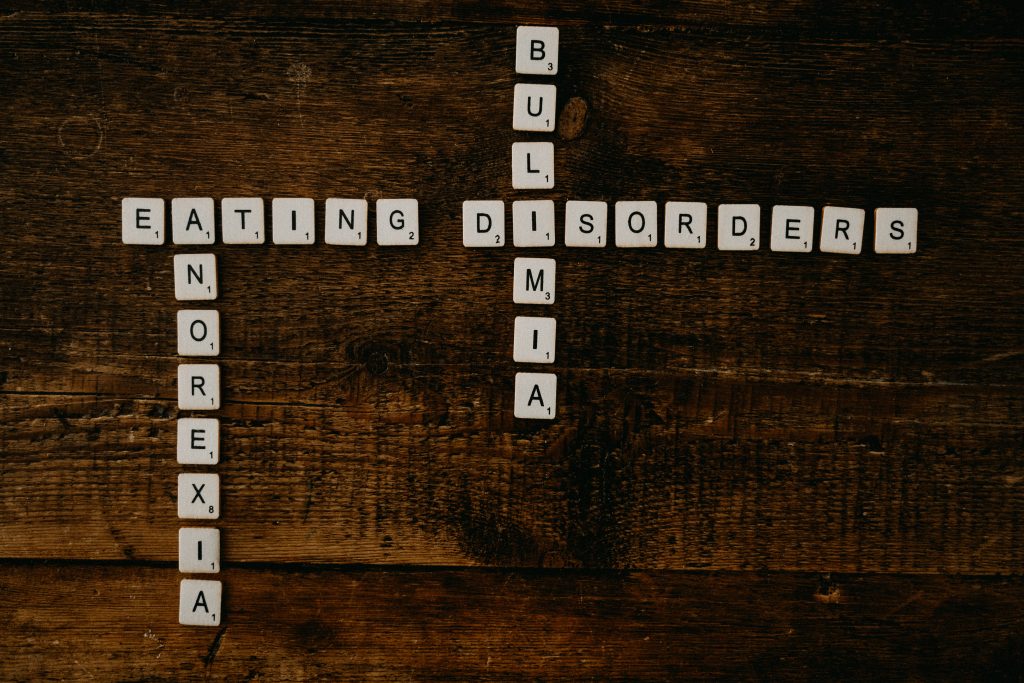And how can you spot it?
Food is a necessary component of life, and eating is a straightforward activity. However, it can be a complicated activity for some people, leading to physical and mental problems.
An eating disorder or a mental disorder may persistently disrupt an individual’s eating behaviour. In the long run, it can hurt a person’s physical and psychological health, as well as the quality of their lives. The pressure put on people to meet societal standards for physical appearance contributes to this disorder. Once, a round body was seen as a sign of wealth and health worldwide. But now, because of fashion, social media, and other changes, a thin body is seen as good and desirable.
Eating disorders are more common in young adults, and men and women are equally likely to have them. Body dissatisfaction is a symptom of eating disorders linked to low self-esteem, anxiety, a negative view of one’s health, and high-stress levels.

Categories of eating disorders
Types of eating disorders include:
- Anorexia Nervosa
This conditiondenotes a lack of appetite brought on by anxiety. It involves an impossible quest for thinness that results in a significantly low body weight. People either overeat to the point where their bones begin to show (extreme thinness), or they starve themselves to the point where they feel unsatisfied with their weight. Symptoms include:
- Fear of gaining weight
• Eating nothing or significantly less
• Distorted or negative body image
“When I weigh myself, I follow a rule. I will starve the rest of the day if I have gained weight, but if I have lost weight, I will still starve.”
- Bulimia Nervosa
The goal of bulimia, like that of anorexia, is to lose weight, but differently. People indulge in binge eating, but when they feel guilty, they try to purge to prevent weight gain. Vomiting, fasting, using laxatives, and exercising are examples of purging behaviours.
“I eat and drink secretly.”
3. Binge Eating Disorder
Young people’s most common long-term illness has become a disease of how they live. They overeat because they have no control over their eating habits. However, they don’t purge, and as a result, they gain a lot of weight or become obese.
4. Restrictive/Avoidant Food Intake Disorder
People with this condition either don’t eat because they aren’t hungry or dislike the food. Low nutrition intake and poor body weight are the results. It usually happens to kids under the age of 7, which slows their physical growth.
5. Rumination Disorder
In this, individuals re-chew food that has already been swallowed before swallowing it whole or spitting it out. It happens right when you start eating your meal. It mainly affects kids and usually goes away, but if it doesn’t, it can lead to severe malnutrition and weight loss.
6. Pica Disorder
People with this disorder eat detergent, chalk, paper, hair, cloth, and other non-edible materials. Eating these things regularly can be extremely dangerous and even fatal. At any age, it can happen. Most of those who experience it already have a mental illness like schizophrenia, an intellectual disability, or autism.
Causes of Eating Disorders
Flawed Thinking
The idea of perfectionism, which says that people should meet high standards and not let mistakes happen, could lead to an eating disorder. Perfectionism is a personality trait that raises a person’s risk of developing an eating disorder.
Perfectionists strive for the “perfect body” and take drastic measures. However, when these extreme measures get out of hand and become unmanageable, they develop into an eating disorder. In the case of bulimia, this perfectionism accounts for the purging cycle that follows binge eating.
Poor Body Image
People’s ability to distinguish between a thin and healthy body and one skinny and unhealthy affects how they perceive body size and appearance. These perceptual biases are typical in eating disorder patients.
For instance, when someone starts a low-calorie diet to lose weight, they frequently find it challenging to set boundaries and can’t stop because of a negative body image. Even a 1- to 2-kg increase in body weight can cause stress and anxiety for these people.
Cultural Factors
More women than men experience bulimia nervosa and anorexia nervosa, respectively. It occurs because males find thin female bodies more alluring and desirable. When people internalise the thin ideal body, they develop eating disorders. Dieting, low self-esteem, and body dissatisfaction are all part of it. Those who work as models, dancers in the fashion industry, or on social media, in particular, are extremely self-conscious about their weight and appearance.
Biological Factors
Sometimes eating disorders are caused by hormonal changes and brain abnormalities. Serotonin, a hormone, and the hypothalamus, a part of the brain, both control appetite and eating habits. Therefore, eating disorders can happen when there is a problem with the hypothalamus and serotonin functioning correctly.

Indicators of an Eating Disorder
If you have an eating disorder, recognising the symptoms and getting help from a professional will speed up your recovery. Always be mindful of your own and other people’s warning signs. Some indications include the following:
- Sudden weight loss or weight gain
• Preoccupation with weight, calories, food intake and carbs
• Skipping meals or eating in small amounts
• Extremely obsessed with body appearance and size
• Extreme mood fluctuations
• Flawed perception of body appearance and size
• Refusal to eat around others
• Low self-esteem and body image
• Frequent episodes of binge eating
Get Expert Assistance
Don’t hesitate to contact a professional if you have displayed some of the symptoms mentioned above.
If you or a loved one is struggling with an eating disorder, call Freephone 0800 140 4044
Freephone: 0800 140 4044
Local rate: 0300 330 3040



